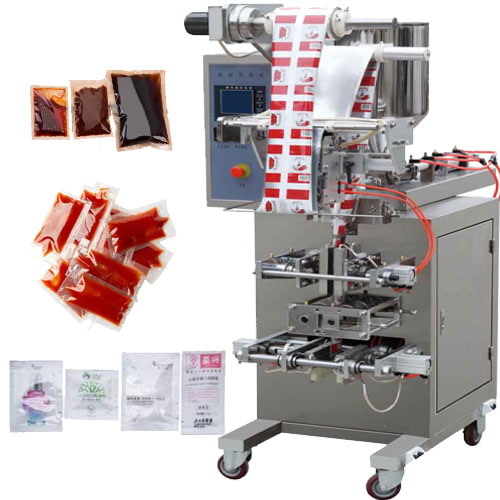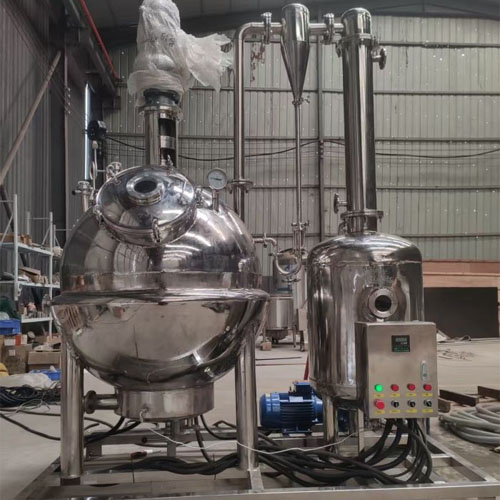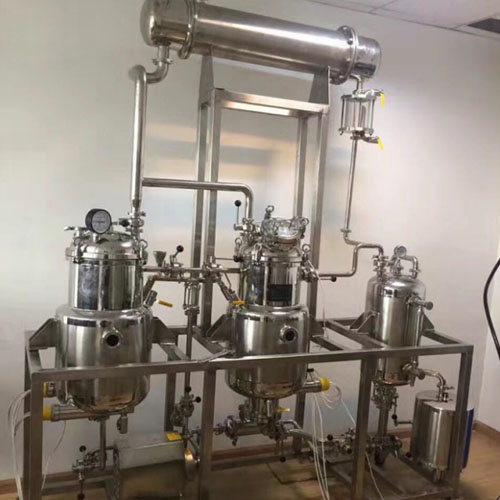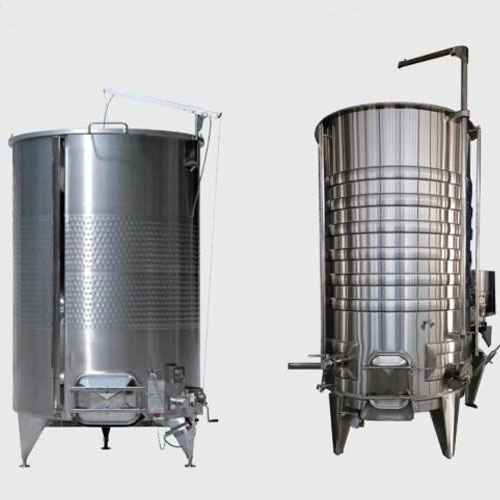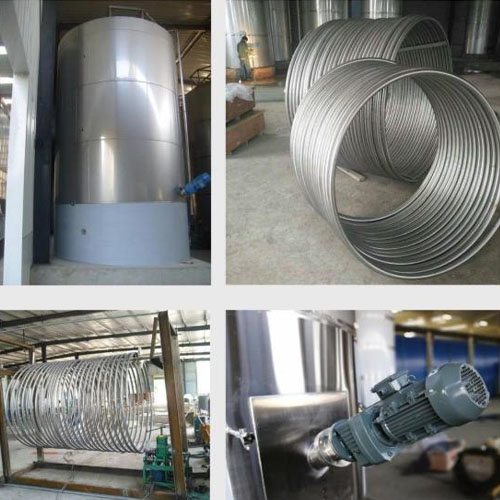Honey Concentrator
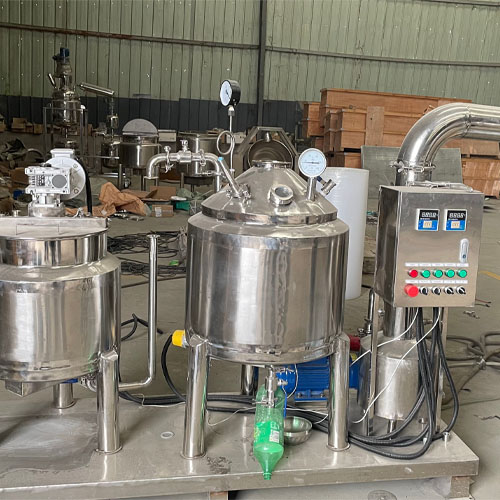
Introduction
The honey concentrator is a core piece of equipment in honey processing. It uses precise temperature control and vacuum dehydration technology to efficiently increase honey concentration (moisture content ≤18%) while removing microorganisms and impurities to ensure that the product meets international standards.
In the modern beekeeping industry, it has become a key piece of equipment for large-scale production, helping companies achieve stable output of high-quality honey.
- Power: 8-36 kW
- Capacity: 50 L-300 L
- Production capacity: 50-300 kg per hour
Working Principle
The core working principle of a honey concentrator is to use a vacuum environment to lower the boiling point of honey. Under low-temperature conditions, excess moisture in the honey is evaporated through heating, while a condensation device recovers the water vapor, thereby increasing the honey’s concentration. This process minimizes the damage caused by high temperatures to the honey’s nutritional components and flavor, balancing efficiency with quality.
Honey → Mixing and Heating Tank (Preheating/Mixing) → Filtration Device → Vacuum Concentrator (Low-Temperature Evaporation) → Condenser (Vapor Condensation) → Collection Tank (Condensed Water) → Discharge Port (Finished Concentrated Honey)
Technical Parameters
| Model | WZE-50 | WZE-100 | WZE-200 | WZE-300 |
| Production Capacity | 50kg/hour | 100kg/hour | 200kg/hour | 300kg/hour |
| Vacuum Pump Power | 0.75kW | 1.1kW | 2.2kW | 2.2kW |
| Concentration Temperature | <50 | |||
| Vacuum Level | >0.092 | |||
| Heating Power | 8kW | 15kW | 24kW | 36kW |
| Mixing Power | 0.55kW | 0.55kW | 0.55kW | 0.55kW |
| Preheating Pot Volume | 50L | 100L | 200L | 300L |
| Concentration Volume | 50L | 100L | 200L | 300L |
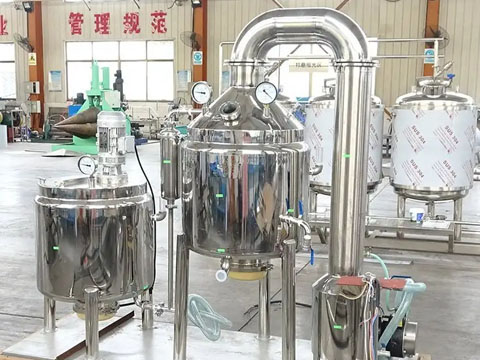
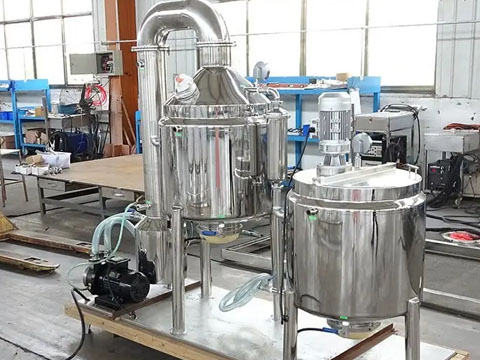
Structural Composition
- Mixing and Heating Tank: Preheats and mixes honey, assists in removing foam. (Structure: Stainless steel tank, motorized agitation, heating jacket.)
- Filter: Removes impurities, wax, and other solids from the honey. (Accessories include optional coarse and fine filters, and bag or plate and frame filters can be added as needed.)
- Vacuum Concentrator: Evaporates moisture from the honey under low temperature and reduced pressure to prevent high temperatures from damaging nutrients and flavor. (Accessories include a sight glass, vacuum gauge, flashlight port, and discharge port.)
- Condenser: Condenses evaporated water vapor into water for separation and recovery.
- Condensate Collection Tank: Collects condensed water to maintain system cleanliness.
- Concentrate Discharge Port: Concentrated honey is discharged from this outlet.
Auxiliary Equipment
- Vacuum Pump: Provides a reduced pressure environment for the vacuum concentrator.
- Circulating Water Chiller/Cooling Tower: Provides circulating cooling water for the condenser.
- Control Box: Controls heating temperature, stirring speed, vacuum level, etc.
- Motor and Reducer: Drives the agitator to ensure even heating of the honey.
- Pipes and Valves: Connect various devices to ensure proper flow of material and cooling water.
Supplied and Optional Accessories
- Thermometer, pressure gauge, vacuum gauge
- CIP cleaning port (for easy cleaning and disinfection)
- Mobile chassis (with casters)
- Filter media (filter bags, filter screens)
- Discharge pump (for easy honey transfer)
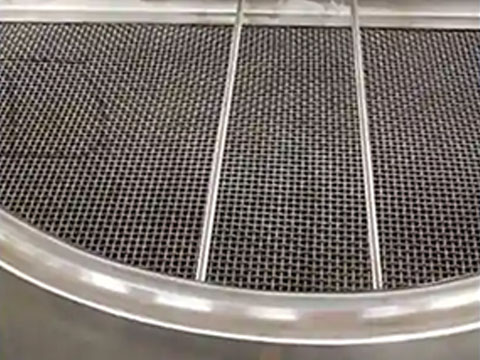
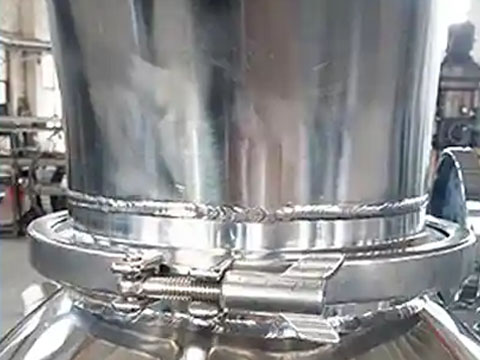
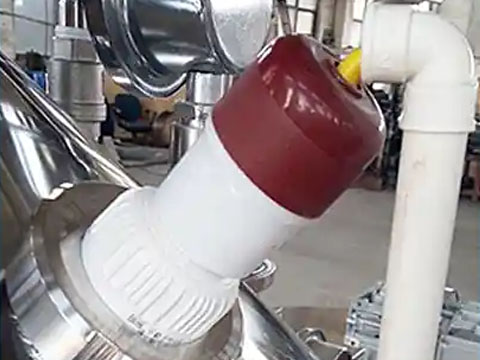

Features and Advantages
- Low-temperature preservation: Vacuum environment achieves low-temperature evaporation at 40-50°C, preserving the nutritional components and original flavor of honey.
- High-efficiency concentration: Rapidly reaches standards in 1-2 hours, increasing honey concentration to commercial standards, suitable for mass production.
- Locks in nutrients: Precise temperature control technology preserves active enzymes and vitamins in honey, avoiding high-temperature destruction of nutritional components.
- Clean and Safe: Food-grade stainless steel components in contact with honey, combined with filtration devices, ensure purity and hygiene.
- Controllable Operation: Precise adjustment of parameters such as temperature and vacuum level via the control system ensures consistent quality.
- Deep Purification: Simultaneously filters impurities (beeswax/pollen) and inhibits microorganisms, extending shelf life and ensuring safer quality.
- Smart and labor-saving: PLC automatically controls concentration, one-button operation saves labor, and supports data traceability management.
FAQ
A: No. The equipment uses a vacuum environment to achieve low-temperature evaporation at 40-50°C, far lower than traditional high-temperature heating. This maximizes the preservation of active ingredients such as enzymes and vitamins, minimizing nutrient loss.
A: It is suitable for most raw honeys (such as acacia honey and jujube honey), including some crystallized honeys (which must be preheated in a preheating tank to reduce viscosity before concentration).
A: The control system monitors the concentration in real time, allowing you to set parameters based on your needs. The vacuum level and temperature can be precisely adjusted to ensure consistent concentration for each batch of finished product.
A: We generally use food-grade stainless steel, which is corrosion-resistant, easy to clean, and meets food hygiene standards to prevent contamination of the honey.
A: Yes. Parts that come into contact with the honey (such as the concentrator, piping, and filter) should be cleaned after each use, with a particular focus on the evaporator and filter. Avoid residual honey from spoiling and affecting the hygiene and taste of the next processing.
Related Products
Pouch Packing Machine
Pouch Packing Machine Introduction This fully automatic pouch packing machine is an automated packaging solution…
Stainless Steel Spherical Evaporator
Stainless Steel Spherical Evaporator Introduction The stainless steel spherical evaporator, also known as a spherical…
Plant Oil Extractor
Plant Oil Extractor Introduction Plant Oil Extraction Equipment is a modern apparatus specifically designed to…
Stainless Steel Floating Roof Tank
Stainless Steel Floating Roof Tank Introduction In winemaking, the thoroughness of fermentation and the stability…
Stainless Steel Wine Cold Stabilizer Tank
Stainless Steel Wine Cold Stabilizer Tank Introduction Stainless Steel Wine Cold Stabilization Tank, also known…
Contact Us



